Two rifles of two World Wars
Of all the variety weapons, used in the World Wars, in both managed to participate only a small number of types. The most famous of them are the rifles, the Russian-Soviet Mosin rifle and the German Mauser 98.
Trilinear rifle arr. 1891 of the year
In the second half of the XIX century in the Russian Empire there were certain problems with small arms for the army. Its peak came at 60, when at a fast pace and without much deliberation half a dozen different types of rifles were used for different cartridges. Then this step was recognized unreasonable, and DA Milyutin, who was at the time the Minister of War, later described the situation as an “unfortunate gun drama”. As a result, for many years almost all the time there was work and disputes around the renewal of the “park” of small arms, but we are only interested in the 1892 contest of the year to create a multiply charged rifle. It should be noted, then rifles (the word-abbreviation for "the rifle gun") was called any rifled weapon, and what is now understood by this word was then called a gun. Foreign samples were the first to be presented to the competition: Mannicher's 8-mm guns (Austria) and Krag-Jørgensen (Denmark). The following year, Sergey Ivanovich Mosin and Leon Nagan submitted their applications for participation, the weapon of the first one had the caliber 7,62 mm, the second - 8 mm. Interestingly, the creation of Nagant shortly before that was lost to the Mauser rifle in a competition of the Belgian army. Not wanting to lose another "tender", Nagan even suggested that the Russian military should modify his rifle to the newly developed cartridge 7,62х54 mm. This cartridge was created by N.F. Rogovtsev on the basis of the Belgian 8-mm cartridge and at that time was considered the most promising for the Russian army.
According to the results of the tests, only samples of Mosin and Nagant were passed to the next round of the competition, although in the year 1890 two more different dozen different guns were additionally considered. In the same year, comparative trials of both rifles began, and the next year they adopted the Mosin rifle. True, it was no longer the prototype of the 89 of the year: at the insistence of the competition commission, Sergei Ivanovich introduced into his project a number of innovations, including those borrowed from Nagant (again, the demand of the military).
Due to some production problems, the first few batches of the new weapon, called the “three-line rifle of the 1891 model of the year”, were ordered in France, and the first units of all domestic production were made at the Sestroretsk plant only in 93. It should be noted, and then "Mosinki" will sometimes be made not in our country. In a number of sources it is mentioned that in 1916, the tsarist government, in view of the workload of defense factories, was forced to order a certain number of “trilineas” to the United States. However, most of the order was completed after both revolutions of the seventeenth, and a number of Mosin rifles were sent to the US Army and the civilian market. The differences between the American “trilineas” and the Russians were in the different markings and material of the lodge: the Americans were cutting it out of walnut, but in our case they made it mostly from birch.
In constructional terms, Mosinka looked like this: a weapon with a long (up to ~ 104 calibers, depending on the version) rifled barrel with four grooves. The caliber of the barrel is equal to three lines (0,3 inches) or 7,62 millimeters. However, sometimes it is noted that due to the low culture of production or wear of weapons, the caliber "walked" within a few hundredths of a millimeter. The ammunition is made from an integral box store for four rounds plus a fifth located in the chamber. Manual reloading - a longitudinal sliding bolt is used on the rifle, and the barrel is locked when turning the latter with the help of two combat constipations. There was also a kind of fuse - for this, the trigger was pulled back and turned around its axis. Aiming on the first version of the rifle was carried out using a sector sight, which had two positions. In the first one it was possible to fire at distances up to 1200 steps (divisions by 400, 600, 800, 1000, 1200), in the second - on more distant ones. The cartridge 7,62х54R, created in 1888, has a protruding rim, which is often noted as a flaw and anachronism even for the end of the XIX century. The first versions of the cartridge had a cylindrical bullet with a rounded end. For melee "trilinek" had a detachable bayonet. Rather, the design of the bayonet allowed it to be removed, but the accuracy rates greatly changed: the point of contact at a distance in 100 m shifted to 12-15, see. The rifle bayonet is quadrangular with valleys, mounted on the barrel with a tubular base and clamp. The tip of the bayonet had a special sharpening, so you could use it as a screwdriver.
In 1891, three versions of the Mosin rifle were adopted:
- infantry. Had the longest barrel (800 mm), completed with a bayonet.
- Dragoons. Barrel length 729 mm, similar bayonet and new belt anchorage. At this time, instead of wire antabok he passed through the cutouts on the bed.
- Cossack. It differs from the dragoons only by the lack of a bayonet.
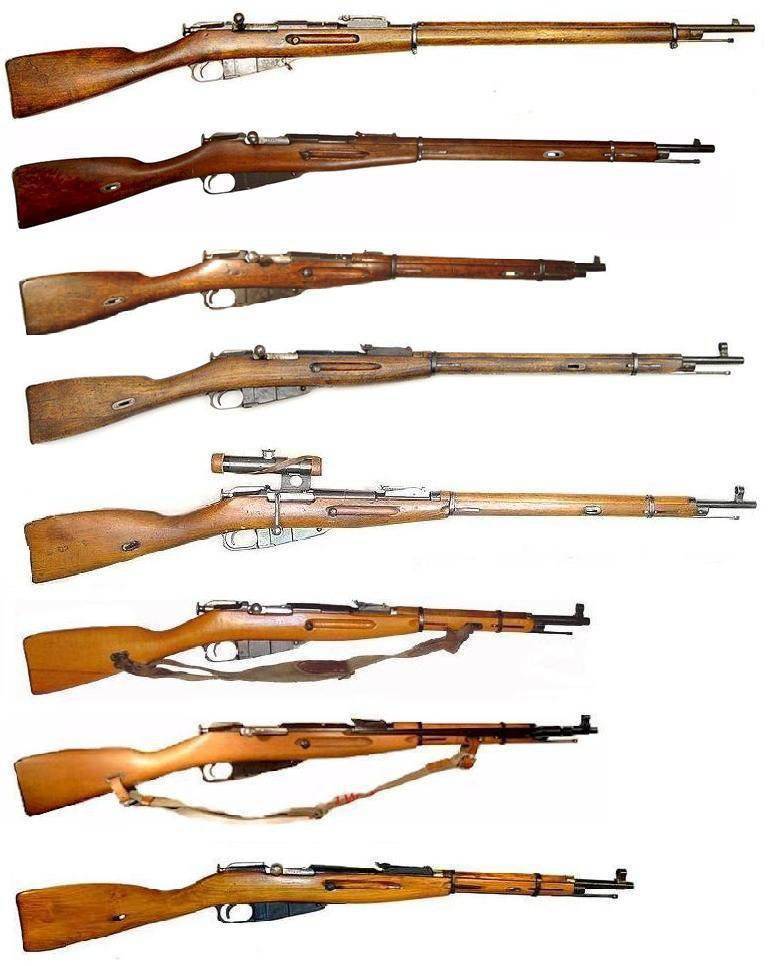
In 1908-10, a new version of the 7,62-mm cartridge, with a pointed-pointed bullet, went into the army. The ballistics changed a bit, so we had to refine the scope of the new rifles. After the October Revolution, when the opportunity arose to “put things in order” in the nomenclature of armaments, of all the variants of the “trilinea” they left only the dragoons, as combining greater usability and sufficient combat indicators. In 1930, the rifle is again upgraded. Now, the markup of the sight for the metric system is altered, the fixings of the ramrod and the bayonet are changed, and a number of other minor corrections are made, for example, the design of the hoop rings that secure the barrel has changed. It was this “Mosin rifle of the 1891-1930 model” that became the basis of the weapons of the Red Army in the pre-war period and the first half of the War. The first carbines with a barrel length 38 mm are produced in 510. Initially, he does not have a bayonet, but in 1944 the carbine gets it. Moreover, the 44 year's bayonet is made integral and folding to the right.
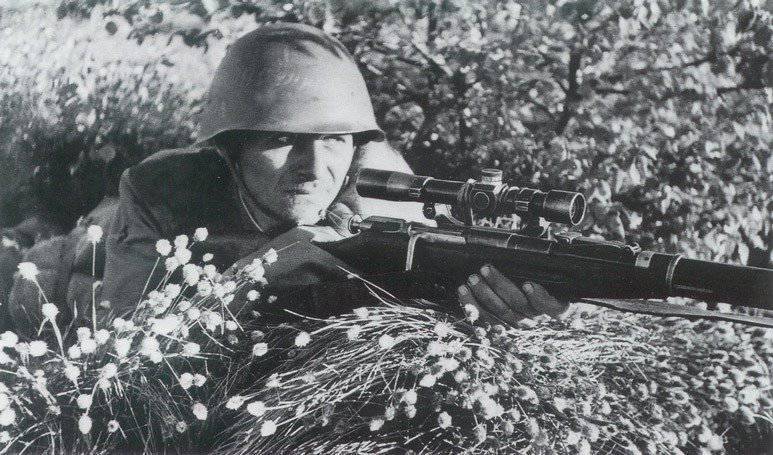
Also, already in the course of the Great Patriotic War, a number of sniper variants of the Mosin rifle were released. They were distinguished by the presence of an optical sight and the shape of the shutter handle: it was bent and did not touch the sight when reloading. Interestingly, some snipers used a rifle with a bayonet - it was a kind of weighting agent and provided greater accuracy.
Gewehr 98
In 1871, the Mauser brothers presented a new Gewehr 1871 rifle to the military community (also sometimes referred to as Gew.71 or simply “71”). Immediately the Prussian military department ordered more than one hundred thousand of these weapons. In the next few years, other countries ordered Mauser rifles to fit their requirements and one after another the following types appeared: Gew.88, Gew.89, Gew.92 and Gew.94. After the creation of the last rifle, Wilhelm and Peter-Paul the Mauzers became concerned with the problem of combining all the innovations applied on different versions of 71 and current trends in weapons business. Moreover, relatively recently (in the 1888 year), the Mauser created a new 7,92x57 mm cartridge with a sleeve without a protruding flange. Structurally, the new rifle, called the Gewehr 1898, was quite similar to its peers, such as the Mosin rifle. At the same time, Gew.98 had a fuse of a new design in the form of a rotary lever on the back side of the shutter and a more compact magazine. The 7,92x57 mm cartridge did not have a protruding lip, therefore it had a slightly smaller size and could fit the store more closely, including in two rows. Due to this, the five-round box magazine Gew.98 almost never stands outside the box. Considered options for increasing the capacity to 7 or 10 cartridges, but the customer in the face of the German military decided that five is enough. In addition, it was noted that the loaded clips for ten rounds have large dimensions and are less convenient to carry. As for the actual rate of fire with a small store, it was considered sufficient against the background of foreign samples.
As already mentioned, in terms of design Gew.98 differed little from the Mosin rifle. The same longitudinal sliding gate, almost the same long rifled barrel (740 mm), attached to the box on the rings. At the same time, in the manual for the German rifle, it was forbidden to charge the cartridge directly into the chamber - the extractor construction did not allow, it could simply break. The fuse located on the gate has two positions - all the way to the left (the drummer is blocked) and all the way to the right (you can shoot). The sights of the Mauser were a front sight covered by a removable ring and an open adjustable sight. The design of the latter allowed to fire at distances from 100 to 2000 meters. On the trunk can be installed bayonet. For various members of the 98 family, seven variants of bayonets of various shapes and lengths were developed. In the first version of Gew.98, a bayonet was installed.
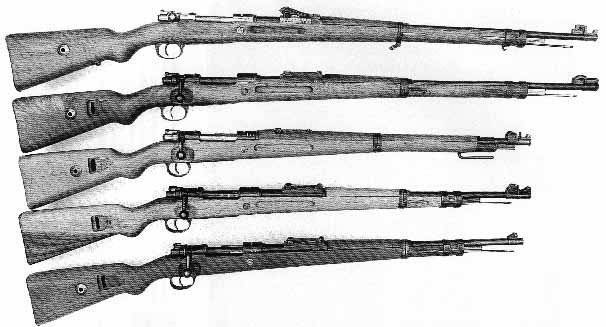
In 1908, the Kar.98a version was released with a slightly modified sight for a new version of the cartridge with a pointed bullet (a bullet with a rounded end was previously used). Interestingly, the presence in the title of the word "carbine" did not affect the length of the barrel, not the overall dimensions of the weapon. The only difference between the "Carabin" and Gewehr.98, besides the sight, was the fastening of the carrying strap. On the rifle they were wire antabas, on a carbine - cuts in the box. The fact is that at that time rifles were called carbines in the German arms business with modifications for use in cavalry. The Germans switched to the “global” meaning of the term only after a few decades. In 23, Kar.98b was released - he received a downward curved handle and a simplified sight. In 1935, the most famous modification of 98, Kar.98k, was launched into the series. This carbine was finally shortened (barrel length - 600 mm), also introduced a bolt delay: the feed part of the store in its upper position prevented the bolt from moving forward and informed the shooter that it was time to get a new clip. Another innovation concerned the grooves for the clip - after charging the store and when the valve was fed forward, it flew out automatically. Sniper modifications were not forgotten. In 1939, the Zf.Kar.98k carbine with a Zf.39 riflescope went to the troops. However, he did not suit the shooters - the dimensions of the sight did not allow to load the weapon with the help of the clip, moreover, he often got off and did not give the necessary accuracy. With 41, sniper carbines began to be equipped with Zf.41 sights, which were mounted on a special block that did not allow it to move, and had smaller dimensions.[/B]
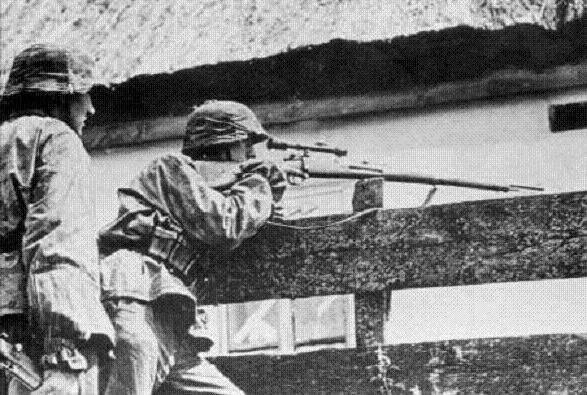
Kar.98k eventually became the most massive modification of "98" - about 15 million carbines were released. It was with these weapons that the Wehrmacht began the Second World War. Nevertheless, a considerable number of older versions of Gew.98 still remained in the German warehouses, which were mainly used in voluntary formations.
[b] Who is who?
It is very difficult to look at the weapons of opponents and not to try to compare them. In addition, as you know, everything is relative. Let's try to "know" the Mosin rifle and the Gewerh 98.
The difference of seven years actually did not have a big impact on the design of the “younger” weapons. At the same time, the German rifle was made under a more promising cartridge without a protruding flange. With the same combat characteristics, he had a slightly more convenient form, which affected the design of the stores of both rifles. In addition, the Gew.98 store is made double-row, and the bolt, unlike the Mosin rifle, does not have fragile parts designed to work with the rim. Another advantage of the "98" family is associated with the bayonet. According to the documents on the use of "Mosinka", it should have been shot down with a closed bayonet. Accordingly, to continue to operate the rifle was required, without removing the latter. The bayonet, of course, is convenient in close combat, but it makes the rifle longer and heavier. However, some snipers, as already mentioned, it was not removed.
The advantages of the Russian-Soviet rifle are in greater “thermal safety”: the barrel is covered with wooden lining almost the entire length and in the production nuances. Mosin initially laid relatively large tolerances in the design of the rifle, which, while maintaining sufficient characteristics, had a positive effect on the cost and convenience of production. Also “Mosinka” is better than Gew.98 with a simpler and more convenient gate design, since for repair in field conditions, only spare parts are needed, without additional tools. If necessary, a soldier could use a bayonet as a screwdriver.
Summing up, we can safely say that with relatively similar characteristics, both rifles - Soviet and German - in tactical aspects equally depended on the owner. In addition, the general result of the war can serve as an answer to the question from the subtitle: the guys with Mauser rifles, despite the fierce resistance, still lost both World Wars.
The first series of the film is devoted to rifles - shop, self-loading and automatic. The viewer will get acquainted with the legendary Russian "trilinear", the German "Mauser 98k", the American rifle "Springfield" М1903 and the English "Lee-Enfield". We will check in action combat samples of the domestic Mosin rifle and the German Mauser 98k carbine and see what will be easier to operate, more powerful and more reliable. Self-loading rifles of the Second World War. Only the Soviet Union and the United States were able to start mass production of this type of weapon. What development was carried out in Germany? We will try in action and the legendary German “Sturmgever”. This weapon marked the beginning of a new type of small arms, which in the West is called an assault rifle, and in our country - an automatic weapon.
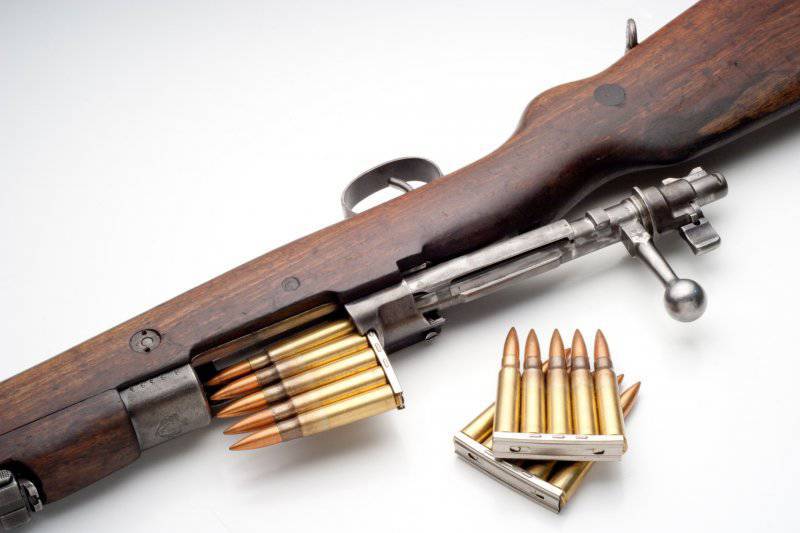
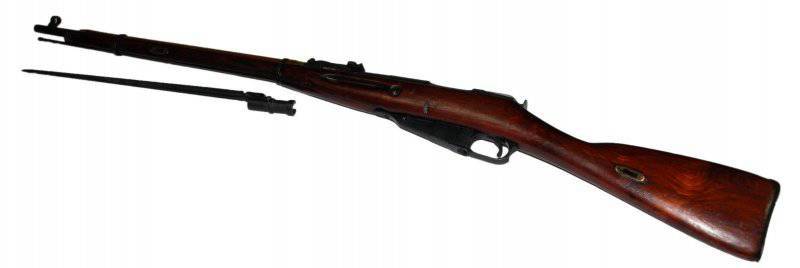

Information